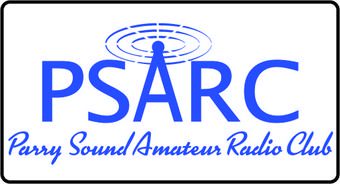PSARC Annual Fox Hunt
Date: TBD – Fall 2023
Time: TBD
Starting Place: Parry Sound Mall Parking Lot
Talk In: VE3RPL
Repeater used During Fox Hunt: TBD
Special if you can decode the message of the fox box in CW you will receive bonuses
Fox Hunting
Radio direction finding (also T-Hunting, Fox Hunting, or Bunny Hunting) is used to find sources of interference to any form of wireless electronic communications, including broadcast and two-way radio,
Locator Transmitters in downed aircraft are tracked with RDF techniques. Hams use RDF to track jamming stations and stolen equipment, but more often, they use it just for fun. Hidden transmitter hunting has been done by hams for about 50 years and it is a growing activity.
Using ‘hide-and-seek”
procedures, a growing number of ham radio operators have taken up the task of finding hidden transmitters (known as the “Fox”). Since this involves only the reception of signals by the trackers (the Hounds), Fox Hunting does not require a ham radio license to participate. Therefore, it is becoming a popular family activity as well. Sometimes the event will be held on foot, while other times the beginning distance between the Fox and the Hounds necessitate the use of a vehicle. Sometimes the “Fox” may be disguised to make the hunt more difficult, so watch out for “Wolves” when you are
hunting too. Whatever the case, it is a fun activity! If you do not have the necessary equipment but would like to know more about this fun “radiosport”, we will team you up with equipped members for
the hunt.
Rules (will be finished soon)
-Each Participant, their crew and navigator shall have fun!
-The Hunt will commence at 1:30pm local time or soon thereafter as is possible
-The FOX Will operate on 146.46MHz Carrier Squelch and must Identify on frequency as per Radio Regulations in RBR-4
-The FOX May give Hints if needed either on repeater or if not using a “FOX BOX” on the FOX Frequency.
-The FOX Shall NOT modify their setup any time after the hunt has started
– The FOX May use a Remote Control “FOX Box” to start or stop, or Single Transceiver. NO Crossband or any other Remote Linking
– Each Participant, their crew , navigator, and vehicle must be registered before the start of the Fox Hunt
-Any type of Antennas May be used
-Antenna attenuators are permitted
-The FOX will be located within the municipal boundary of the Town of Parry Sound
-Upon locating the FOX the participant, their crew and navigator must identify themselves to the FOX
-All vehicles must be properly insured and plated for road use
-In no event shall the Parry Sound Amateur Radio Club, it’s Executive and
members be held liable for direct, indirect or consequential damages, injuries, loses, costs, fees or expenses of any nature or kind incurred by participants.
ARDF Fox hunting Tips
Finding hidden transmitters can be a great sport but searching out and finding radio signals can be a useful training activity for clubs and emergency communications groups. Your transmitter finding skills can be put to use in search and rescue if the lost person has a beacon of some sort, or finding malicious interference that may be plaguing a repeater. Radio direction finding skills can even be used for non-malicious interference like a transmitter inadvertently causing interference or a leaky cable television tap.
So how to you get started? Here are some tips for the beginning fox hunter.
- Use a directional antenna. The 3 element tape measure Yagi is an easy project and works quite well in searching for hidden signals. When I take a signal reading with the antenna I like to use a compass to plot the heading on a map. Then I move to a new location and attempt to triangulate the signal. Doing this will get me into the ballpark, and then I’ll switch to the close-up methods for finding the signal.
- When you get close to the signal, it will overwhelm the S-Meter on your radio, making it difficult to ascertain the direction. An attenuator allows you to reduce that signal so you can view the amount of change on your meter as you sweep your antenna around. But you can also hunt for signals without the attenuator:
- Body Fade the signal. Using the duck antenna on your handheld, hold the radio close to your body and physically turn until the signal is strongest. If the signal is strong in all directions, partially unscrew your antenna for more attenuation. Fashioning a shield out of a piece of aluminum foil can also help cut the signal strength as you search.
- Listen to a harmonic. As you get close, you’ll be able to hear the transmitter’s 2nd and 3rd harmonic. If the fox is transmitting on 146.46, tune your radio to 292.92Mhz or 439.38Mhz and listen for the signal.
- Look for clues. The person hiding the fox might be quite crafty; but sometimes there be clues, evidence that someone was there before. These clues might lead you to the hidden transmitter.
Conclusion
Fox hunting can be fun and exciting activity. You don’t even need a license to search for a fox, so unlicensed individuals can take part in the fun. I’ve set up fox hunts for Scouting groups. The kids love the activity, and it could be a first step for them developing a life long passion for amateur radio.
Finally, in your fox hunting adventures, please follow the rules of the road. Tread lightly and no trespassing on private property. Ask for permission first.
Credit KB9VBR https://www.jpole-antenna.com
 Parry Sound Amateur Radio Club
Parry Sound Amateur Radio Club